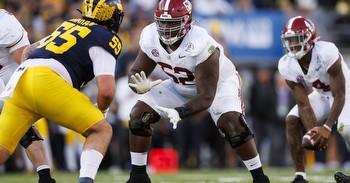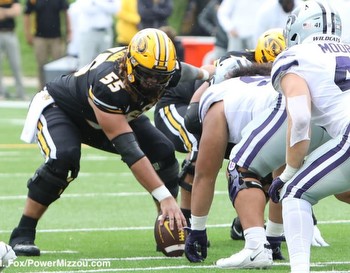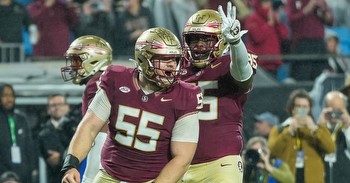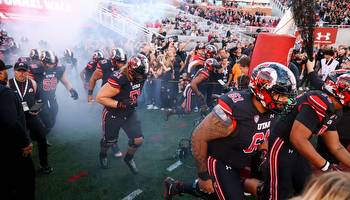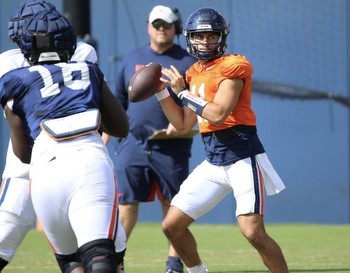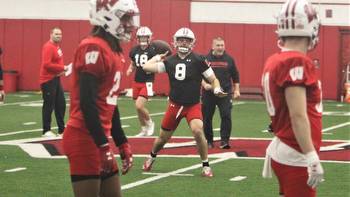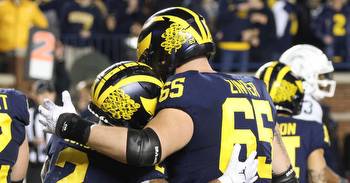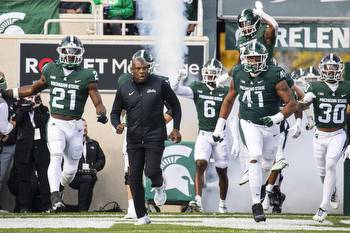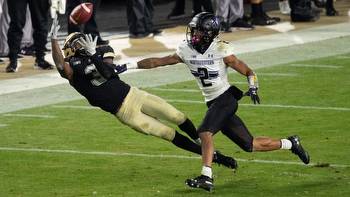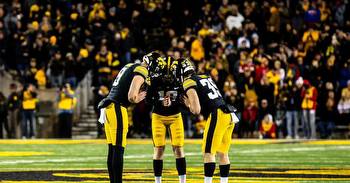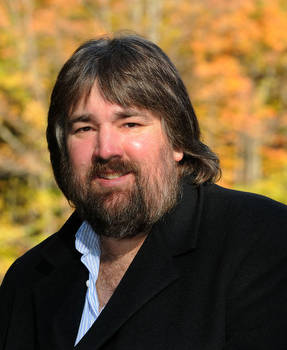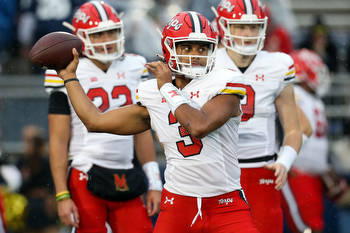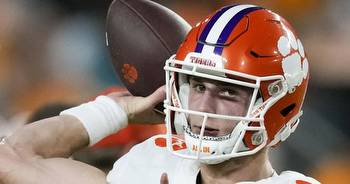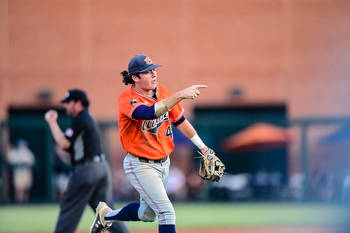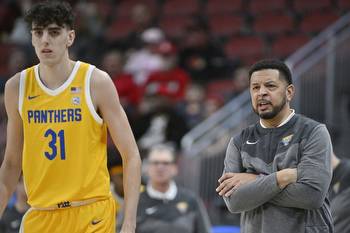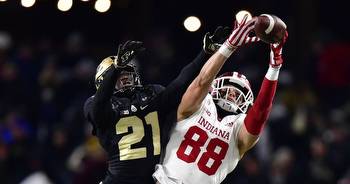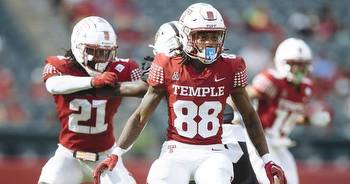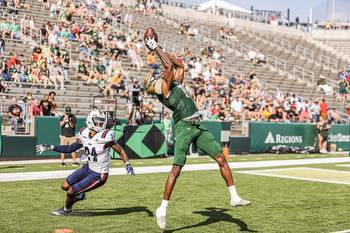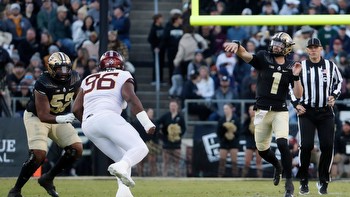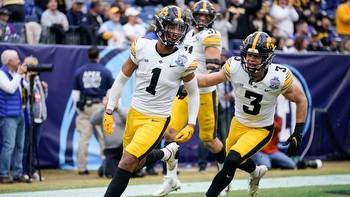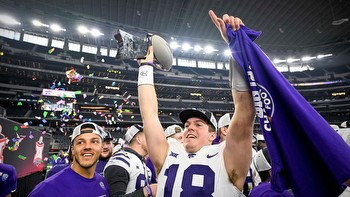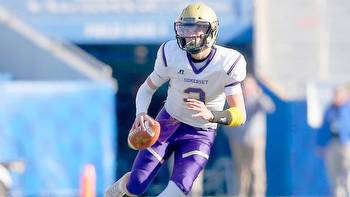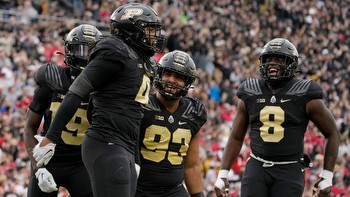Big Ten Football 2023: Purdue Offensive Preview Hudson Card Devin Mockobee Graham Harrell TJ Sheffield
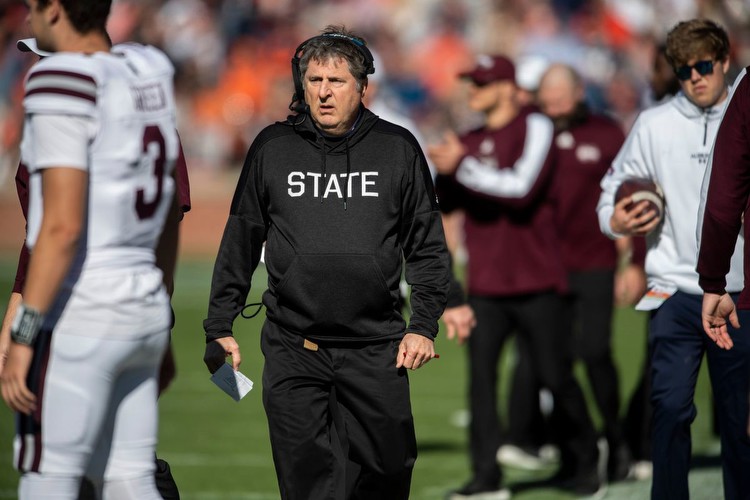
With the departure of the entire offensive coaching staff and the loss of the #1 QB, #1 WR, #1 TE, and 3 of the starting offensive linemen from last year’s team, the Purdue Boilermakers offense is starting over in 2023.
Enter Graham Harrell and his version of the Air Raid offense.
What is the Air Raid?
The Air Raid was developed by the dread pirate Mike Leach (RIP) and Hal Mumme at the now defunct Iowa Wesleyan College in the late 1980s. It was developed by borrowing many of the concepts of then BYU head coach LaVell Edwards as well as stealing some ideas from the West Coast offense.
The offensive scheme of Mumme and Leach helped turn Tim Couch into a star at Kentucky and the #1 NFL draft pick. Leach then took the ideas to Oklahoma as OC in 1999 and then Texas Tech as HC in 2000. From there the offensive scheme began to disperse throughout college football with coaches such as Lincoln Riley (Oklahoma and USC), Seth Littrell (North Texas), Josh Heupel (Tennessee), Dana Holgorsen (West Virginia and Houston), Mike Gundy (Oklahoma State), and Sonny Dykes (SMU and TCU) incorporating some or all of its concepts into their offenses.
The Air Raid typically uses a shotgun formation with four wide receivers and one running back but Graham Harrell’s version has several wrinkles. He prefers to use one tight-end in his Air Raid offense using at least one on 98% of Southern Cal’s 2021 snaps.
The other main difference between Harrell’s Air Raid and traditional Air Raids is his ratio of passing to run plays. Air Raid offenses will pass the ball up to 75% of the time, Harrell tends to have a much closer to 50-50 split. At USC his teams passed 57% of the time and at North Texas just 51% of plays were passing plays. Graham Harrell likes to use zone rushing concepts and RPO packages which are the foundation for his relatively heavy use of the running game.
Passing plays are designed to get the ball out of the quarterback’s hands quickly and the number of plays in the playbook are limited to keep things simple and perfect execution of those plays through endless repetition. Mesh (think rub routes), stick and corner plays, all curls, 4 verticals, and fast screens are fundamental play concepts. I’m a basketball guy rather than a football guy, so if you want detailed diagrams of Air Raid plays, check out this article from our Purdue colleagues: https://www.hammerandrails.com/2022/12/16/23512563/sound-the-alarm-walters-hires-air-raid-offensive-coordinator-graham-harrell
The offense puts the decision making in the hands of the quarterback by using no huddle tempo and allowing the quarterback to diagnose the defense and audible based on what the defense is showing. The fast pace is used to prevent the defense from substituting and tire them out over the course of a game. Everything is setup to make it easy for QBs and WRs to read and react to the defense.
The Players
Quarterbacks
The starter is almost certainly locked in, but the lack of experience or depth for the backup spots are concerning. If you are looking for an excuse to bet against Purdue’s season long prospects, the QB depth is probably the best reason. The depth is better than it was in January, but still very inexperienced.
Starter
Junior Hudson Card is the projected starter and was Ryan Walters first big target in the transfer portal. Card is a former top 100 prospect with dual threat ability. In limited opportunities last season he went 75 for 108 with 928 yards and 6 touchdowns versus just 1 interception. The sky is the limit for Card and Purdue’s success this season is almost certainly linked to Card’s personal success more than any other player on the roster.
Backups
The backup QB spot is probably a two way competition between two freshman.
True freshman Ryan Browne enrolled early and spent spring ball with the roster giving him a small leg up on the competition. Browne is a three star recruit from New York that stuck with his commitment after Brohm’s departure. The preference is for Browne to redshirt, but if he is the best backup QB (and Purdue needs to go to the backup this season) he will play.
The other scholarship QB on the roster is Bennet Meredith who transferred in from Arizona State after spring ball. Meredith is a former Northwestern commit and was a three star prospect. He did not play during his freshman year in the desert. Due to already spending a year in the college ranks, Meredith is probably the favorite to land the top backup spot.
With just three scholarship quarterbacks on the roster, a handful of walk-ons are also competing for the primary backup spot. Juniors Kyle Adams and Christian Gelov return to the roster after last year while true freshman Jake Wilson has joined as a preferred walk-on after previously committing to North Texas.
Running Backs
Like the QB room, the running back room added multiple pieces to address depth concerns. Unlike the QB room, the running back room has their top two options returning.
Starter
Devin Mockobee earned his scholarship last season after rushing for 968 yards by averaging 5.0 yards a carry. He did this despite not taking over the starting role until about halfway through the season and entering last year at the bottom of the running back depth chart. Mockobee is a physical runner who keeps his legs churning after contact. Mockobee will get a heavy dose of the carries, but has more options behind him in the running back room than he did at the end of the 2022 season. Hopefully that keeps him fresh throughout the long season.
Backups
Dylan Downing returns for his final college season after racking up 351 yards on 93 carries last season. I haven’t seen a clear statement from any of the usual sources to this effect but I believe Downing collected a scholarship for his final season. Downing doesn’t have breakaway speed but is able to collect difficult hard yards in between the tackles. He will be a valuable part of the running back rotation this season.
Tyrone Tracy Jr. has converted to running back from the wide receiver position for this season. He ran some jet sweeps last year in Brohm’s offense and as a former wide receiver is the best pass catcher in the Purdue backfield. Tracy is better suited to run outside of the tackles than inside but has better speed than Downing. His ability to pick up edge rushers and block in the backfield will be critical to determining how often he plays this season.
True freshman Christian Womack rounds out the scholarship RBs after receiving a very late offer in the spring. While Womack could probably use a redshirt year to acclimate, with only four scholarship running backs on the roster he is likely to see playing time at some point.
Multiple walk-ons could see playing time if the injury bug raises its head.
Wide Receivers
Projected Starters
T.J. Sheffield in the slot and Marshawn Rice on the outside are expected to be two of the three starting wide receivers. Both are redshirt seniors that have shown themselves to be reliable options and their skillsets should play up in the Air Raid offense.
The third starter at the wide receiver position is up for more debate. Abdur-Rahmann Yaseen is the consensus pick but he has had trouble staying healthy and on the field the past two seasons. His brief appearances have demonstrated his athletic ability. Yaseen will have to hold off transfer wide receiver Jahmal Edrine who put up big time numbers at Florida Atlantic (in a non-pass heavy offense) as well as Elijah Canion (formerly of Auburn) who missed the majority of last season after being injured in the opener against Penn State.
Late update: It was announced yesterday that Edrine has torn his ACL and is out for the season.
Projected Backups
Whomever loses the third starting wide receiver spot out of Yaseen/Edrine/Canion are likely to back up the winner as well as Rice.
Deion Burks is considered the favorite to back up Sheffield in the slot and has plenty of speed to showcase.
Redshirt freshmen Zion Steptoe and Curtis Deville Jr. along with JUCO transfer Jayden Dixon-Veal will compete to break into the rotation. Steptoe and Deville have plenty of speed and with the injury to Edrine will have an opportunity to play if they can demonstrate their abilities in practice. Walk-on Andrew Sowinski played a bunch under Brohm last and has shown himself as a reliable blocker and pass catcher. I’m not sure how he fits into Harrell’s offense (Brohm used him lined up as FB a lot last year) but don’t rule him out completely.
That leaves the freshmen and the rest of the walk-ons. Jaron Tibbs has surprised some with great catches in fall camp while Armand Branch is the lone 4 star prospect from last year’s recruiting class. I don’t think either breaks into the rotation this year with the depth in front of them, but they are the most likely ones out of this group.
Tight Ends
Starter
Garrett Miller is the likely starter this season if healthy. The redshirt junior missed all of last season after suffering a knee injury in August 2022. Despite Payne Durham now being in the NFL, Miller was considered the most athletic tight end on last years roster. In 2021, Miller made 19 catches for 165 yards. He’s been held out of the parts of the beginning of fall camp but is fully expected to be ready for the start of the season.
Projected Backups
The former quarterback Paul Piferi should be the primary backup after serving in that role for 2022. At 6’5”, Piferi offers a big target for QBs and generally does a solid job running routes and catching passes but he has been primarily used as a blocker in the offense.
The third tight end spot is a wide open competition. Redshirt sophomore Drew Biber and redshirt freshman Max Klare return but have limited experience. They combined for one catch last season (Biber’s six yarder against Indiana State). Both will have to hold off true freshman George Burhenn who has been consistently mentioned as the most impressive among the freshman offensive players.
Offensive Linemen
Projected Starters
If healthy, Gus Hartwig will be the starting center. He’s on the Outland Trophy watch list for this season but was injured in the Northwestern game last November. Hartwig’s status for the opener is still in question. He’s been going through workouts with the team but its still to be determined whether he will be a full go by the opener.
Redshirt sophomore Mahamane Moussa will hold down the left tackle spot. Moussa has been a bright spot among the backup Purdue linemen his first two seasons but now moves out to left tackle following the departure of Eric Miller to Louisville. Moussa is going to be a great tackle, but made have needed another season at guard before moving outside.
Marcus Mbow will be starting on the Purdue offensive line. My favorite of the Purdue linemen, Mbow is a redshirt sophomore that is probably slightly better at the RG position than the RT spot right now. But due to a lack of tackles in the O-line room, Mbow is taking reps at both positions and many expect that he will be the starting RT when the season kicks off.
Jalen Grant has transferred in from Bowling Green after starting 27 games there the past three years. Grant has plenty of competition for the guard spots but I have him penciled in as the starting LG.
The last spot along the offensive line could go to a variety of options depending on health and how they best mesh with the other starters. Daniel Johnson could start at right tackle but he is coming off a knee injury suffered against the Gophers last year. Transfers Ben Farrell, Luke Griffin, and Preston Nichols could all compete for a starting spot but project more as guards than tackles.
Farrell did play tackle at his last spot (Indiana Wesleyan) but with the increase in level, the staff would prefer to move him inside and I would agree with that assessment. Griffin was a left guard at Missouri and while he did not start for the Tigers last season he did not allow a sack or QB hit in his 116 snaps. He has followed his former O-line coach to Purdue. Nichols was the starting left guard for UNLV last year but previously served as a tackle for Charleston Southern.
Projected Backups
Josh Kaltenberger was expected to be the primary backup center to Gus Hartwig (and potential starter if Hartwig isn’t ready to go) but the staff also brought in transfer Austin Johnson who will compete with him for that spot. Although I haven’t seen it posted anywhere, a rumor from one of the other Boilerbots mentioned Kaltenberger being injured at practice yesterday. Johnson primarily played as a guard at Colorado and could see time at either position. Redshirt freshman Malachi Preciado is probably ready to see action as a backup center this year if he becomes needed.
The backup guard spots go to whomever doesn’t win the starting spots above. Sophomore Zach Richards could also work his way into the mix.
The tackle positions do not have much in the way of depth especially if Mbow has to be a starter. I really like the combination of Moussa and Mbow locking down the tackle spots, but if Johnson is out that forces Farrell to be their primary backup and as mentioned above he’s probably more suited to guard at this level. Redshirt freshmen Vince Carpenter and Andrew Oben could see time although both could probably use one more season in the weight room before becoming part of the rotation. That leaves Bakyne Coly, a 6’7, 280 pound tackle who has transferred in from NAIA Lawrence Tech. Coly is a relative newcomer to the game as he did not play high school football and is a high upside developmental piece. Despite his upside Coly likely needs another year or two before he’s ready to be a difference maker on the offensive line.
Overview
There are some nice pieces along the Purdue offense. I’m really high on the potential of Card, Miller, Mbow, Moussa, and some of the younger wide receivers but not sure it will all come together for them this year. Mockobee gives Purdue a viable running threat for the first time since 2018 and will look to build upon an excellent freshman campaign.
There are depth concerns at the QB, RB, and OT positions. The starters can more than hold their own but can they stay healthy and can rotational guys do their part? Can a wide receiver step up to be a number one target? Will the players pick up Harrell’s offense in one offseason? It’s not super complicated, but repetition is a large part of what makes the Air Raid successful. I’m optimistic for the offensive production this season, but I can also see things falling apart if the injury bug hits a couple of key guys.
3%
Great
(1 vote)51%
Good
(17 votes)30%
Average
(10 votes)9%
Bad
(3 votes)6%
Iowa
(2 votes)

